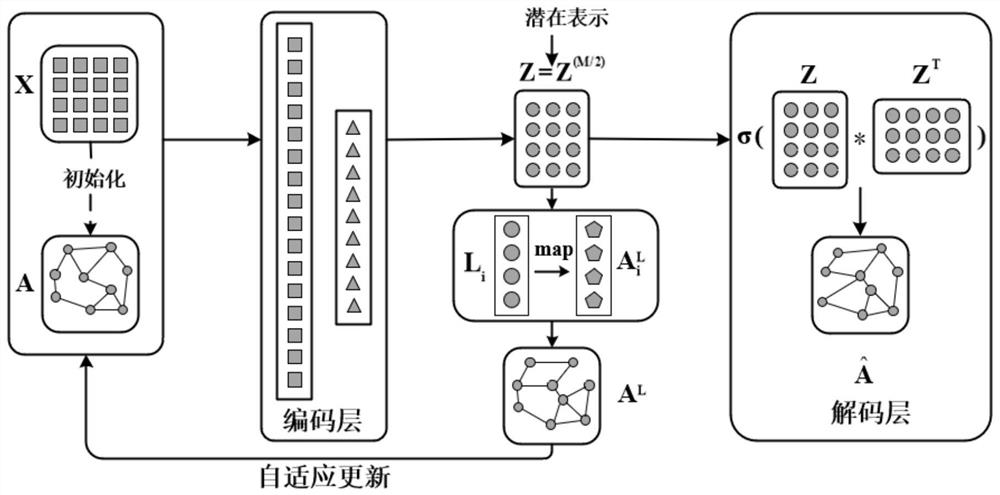Graph embedding method based on adaptive graph learning
An adaptive learning and graph embedding technology, applied in the field of graph embedding, to achieve strong robustness, expand the application range, and expand the effect of the application range
- Summary
- Abstract
- Description
- Claims
- Application Information
AI Technical Summary
Problems solved by technology
Method used
Image
Examples
specific Embodiment
[0098] 1. Simulation conditions
[0099] In this embodiment, the central processing unit is Simulation using Python software on i7-10700F 2.90GHz CPU, memory 16G, WINDOWS10 operating system.
[0100] The Cora data set used in the experiment was proposed by Kipf et al. in the document "T.N.Kipf, M.Welling.Variational Graph Auto-Encoders.NIPS Workshop on Bayesian Deep Learning, 2016." It contains 2708 samples and 5429 pairs of links. Each sample contains 1433 features, which are divided into 8 categories.
[0101] 2. Simulation content
[0102]Experiment with node clustering on the dataset. In order to verify the effectiveness of adaptive learning, missing processing is performed on the Cora dataset, and the missing ratios are {0%, 5%, 10%, 15%, 20%, 25%, 50%}. In order to compare the effectiveness of the present invention, Salha et al. were selected in the literature "G.Salha, R.Hennequin, and M.Vazirgiannis.Keep its simple: Graph autoencoders without graph convolutional n...
PUM
 Login to View More
Login to View More Abstract
Description
Claims
Application Information
 Login to View More
Login to View More - R&D
- Intellectual Property
- Life Sciences
- Materials
- Tech Scout
- Unparalleled Data Quality
- Higher Quality Content
- 60% Fewer Hallucinations
Browse by: Latest US Patents, China's latest patents, Technical Efficacy Thesaurus, Application Domain, Technology Topic, Popular Technical Reports.
© 2025 PatSnap. All rights reserved.Legal|Privacy policy|Modern Slavery Act Transparency Statement|Sitemap|About US| Contact US: help@patsnap.com



